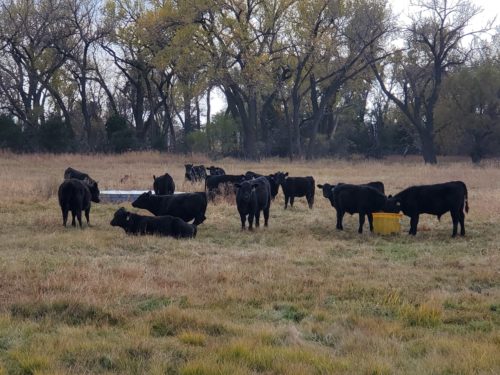Get Tubs Out!
Posted: August 2, 2022 | Written By: Leon Garrett, Form-A-Feed Nutrition and Production Specialist

We are now approaching mid-summer and the grass out in pastures will be starting to mature. If you aren’t already supplementing with protein lic tubs you might want to start considering that option.
Forage quality changes throughout the season depending on moisture and maturity. Tub supplementation is a good tool to fill in the holes nutritionally that they might be missing. Livestock cannot consume enough forages while grazing to meet their nutritional requirements. Now is a critical time to keep protein, vitamin and mineral levels adequate to keep calves growing, cows milking, staying healthy, and finishing out the breeding season.
One of the most important things when choosing a lic tub product is how it is made. There are three types of lic tubs. They are pressed tubs, chemically hardened tubs, and low moisture (cooked) molasses tubs. A low moisture (cooked) molasses tub has a more consistent and lower consumption rate compared to the other two processes, giving you a much cheaper cost/head/day. When considering lic tub supplementation cost/animal, take the price of the tub divided by the weight of the tub to get cost/pound of product. Then multiply that cost by the intake amount of consumption/head on the tag label. This will result in your cost/head/day. The difference in cost between 1/2 lb/head/day and 1 lb/head/day consumed can really offset the difference in initial cost of the product.
Make sure when comparing the price of products, that you look at vitamin and mineral levels. Also consider sources of minerals as well. Chelated minerals have a much higher absorption rate than just oxide and sulfate products. Higher quality minerals sources are utilized better by the animal resulting in lower intakes. Lower quality sources cause higher animal intake resulting in a higher cost/head/day and can reduce absorption of mineral. Increased levels of a low-quality mineral source doesn’t equal good levels of high quality sources.
Consider if there is a fiber digester included? With the high cost of forage, a fiber digester is very beneficial. A fiber digester unlocks diet nutrients in feedstuffs. Proper supplementation helps livestock get more nutrition out of the fiber (pasture or hay) getting more “bang for the buck” out of the forage. This can help to extend pasture use and feed supply.
Since it is mid-summer, we are also deep into fly season. When days start getting shorter flies go into a loading phase of increasing population up until a hard freeze. Supplementing lic tubs with garlic will help with fly annoyance to livestock, and Altosid ® IGR (insect growth regulator) delivers targeted control and reduced population of horn flies.
Here at Form-A-Feed we have several formula options to consider in our Form-A-Lic tub line and biodegradable options as well. Please contact your Form A Feed dealer or nutrition specialist for more information.